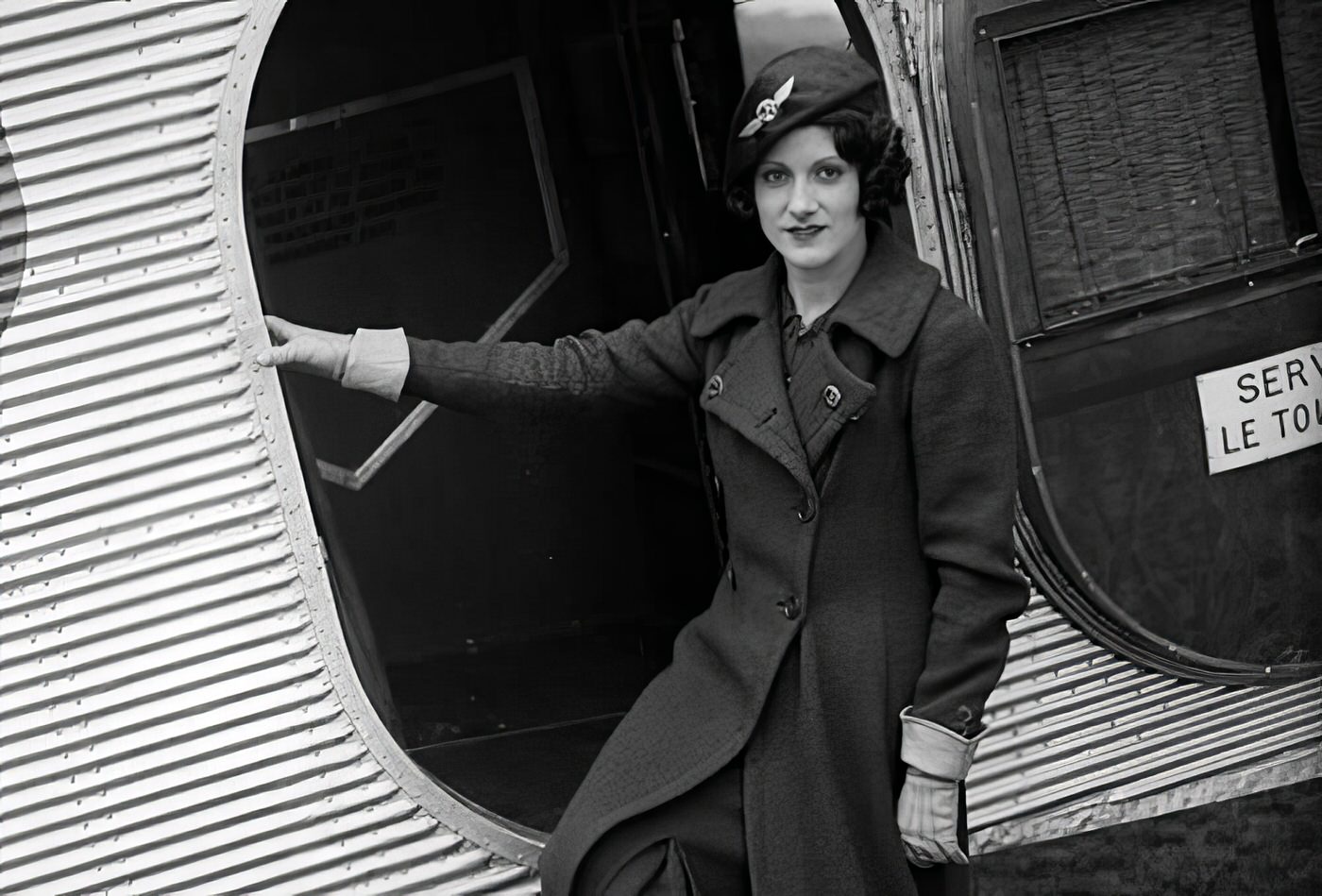The skies were changing in the 1930s. Air travel, once a daring adventure for the wealthy and adventurous, was becoming more accessible to the average person. However, flying back then was a far cry from the comfortable experience we know today. Planes were noisy, bumpy, and prone to delays. Passengers were often nervous and prone to airsickness. That’s where the first female flight attendants, also known as stewardesses, came in.
1930s: Ellen Church and the Sky Girls
In 1930, Ellen Church, a registered nurse and licensed pilot, approached Boeing Air Transport (later United Airlines) with a novel idea. She proposed that hiring nurses as stewardesses would not only enhance passenger safety but also reassure nervous flyers. Boeing agreed, and Church became the world’s first female flight attendant, along with seven other nurses she recruited and trained.
These early stewardesses, known as “sky girls,” faced strict requirements. They had to be young, unmarried, and meet specific height and weight standards. They were also expected to be registered nurses, highlighting the emphasis on passenger care and safety. Their uniforms were simple yet professional, consisting of navy blue suits, white blouses, and caps.
The sky girls’ duties were varied and demanding. They greeted passengers, assisted with boarding, served meals and drinks, and provided comfort and reassurance during turbulent flights. They were also trained in first aid and emergency procedures, ensuring the safety of everyone onboard.
Read more
The Rise of a New Profession
The introduction of female flight attendants was a resounding success. Passengers appreciated the care and attention they received, and airlines recognized the value of having trained professionals onboard. Other airlines soon followed suit, hiring their own stewardesses and expanding the role beyond nursing to include customer service and hospitality.
By the end of the 1930s, stewardesses had become an integral part of the airline industry. They helped to normalize air travel and make it more appealing to a wider audience. Their presence onboard provided a sense of comfort and security to passengers, and their professionalism helped to elevate the overall travel experience.
The role of stewardesses continued to evolve in the following decades. During World War II, many women served as flight nurses, caring for wounded soldiers on air ambulance flights. This wartime experience further demonstrated the value of having trained medical professionals onboard aircraft.
In the post-war years, air travel boomed, and stewardesses became even more essential. Their uniforms became more stylish, reflecting the fashion trends of the time. Their duties expanded to include in-flight entertainment and providing information about destinations. They were also expected to maintain a high level of grooming and adhere to strict standards of appearance.
However, the 1960s and 1970s brought new challenges for stewardesses. The rise of the feminist movement challenged traditional gender roles, and stewardesses began to fight for equal pay and opportunities for advancement. They successfully challenged discriminatory practices, such as mandatory retirement ages and restrictions on marriage and pregnancy.

























